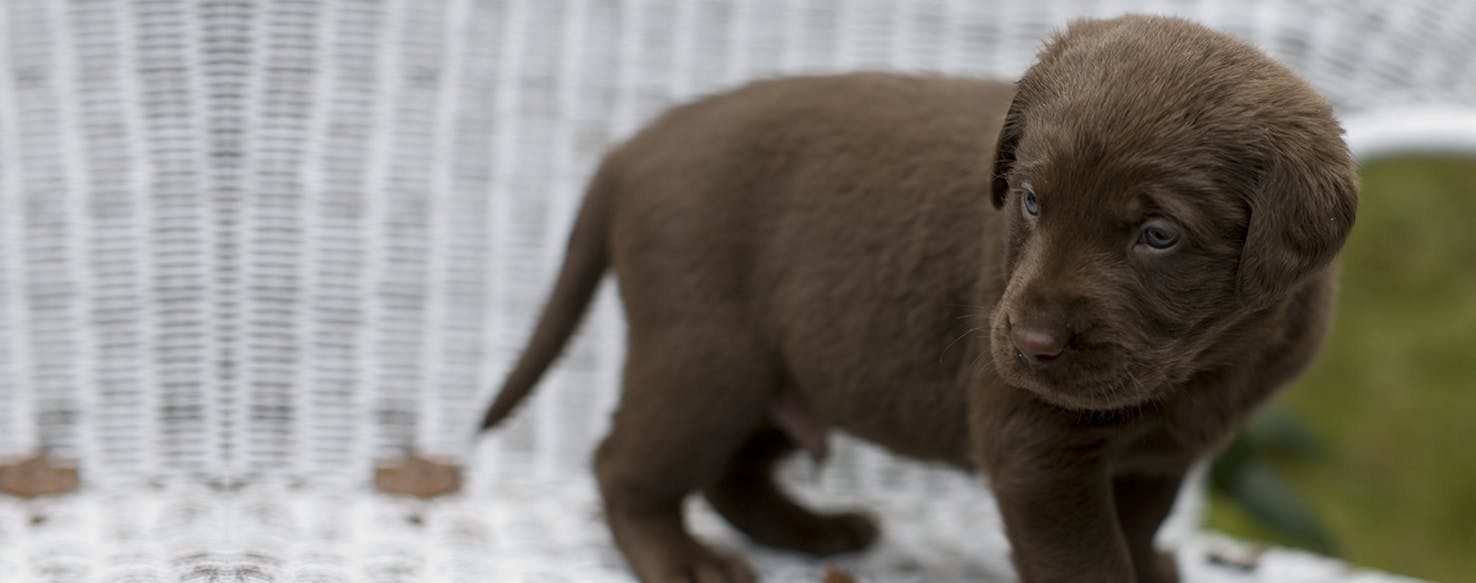- Home
- The Daily Wag!
- Senses
- Can Dogs See Patterns?

Have you ever imagined what life through the eyes of your pup is like? Watching your pup gazing into the yard, you can’t help but wonder what they see that you don’t. The canine world is much different from the human world, but that doesn't mean that dogs can't see the world as well as us humans can. And contrary to popular belief, dogs can indeed see colors; just not in the same way we see them. But how about patterns?
Vision, and ultimately the ability to detect patterns, is one of the most complex processes an animal can achieve. Dogs have dramatically different vision than humans because they evolved differently and to specialize in different areas.
Although your pup may be less interested in watching television because of its limited visual abilities, higher-resolution screens have been reported to increasingly catch your pup's attention. So it is possible your pup may notice something on a screen as well, that perks the interest!
Body Language
While we know that dogs are sometimes able to see patterns, dogs may also exhibit body language signs that show what they can see. Here are some signs you may notice:<br/>
- Staring
- Alert
- Head Tilting
- Wag Tail
Other Signs
Below are some more cues that show your pooch can see patterns:<br/>
- Excited Behavior
- Obsessive Behavior
- Mouthing Objects
Domesticated dogs come from wolves and therefore, have embedded in their DNA the innate ability to hunt for food. Dogs' eyes are designed to notice even the slightest movement no matter how far away, but dogs still don’t have 20/20 vision. Dogs are considered nearsighted, but dogs don’t rely on their eyes as much as we rely on ours. Instead, dogs rely on their sense of smell. To them, they tend to "follow their noses" rather than their hearts.
A dog’s vision tends to be less sharp than human vision. Although, colors, focus, and details are less important for dogs; it is much more necessary for dogs to see subtle movement. Interestingly enough, wolves are nocturnal creatures and hunt their prey at night. Because of this, dogs see best in dim light settings, like dusk or dawn. Dogs' eyes are designed to notice the slightest of movements.
Additionally, dogs have much better peripheral vision than humans do. Dogs' eyes are set up so that they have a wide field of view, up to 270 degrees. Humans, on the other hand, can only see a maximum of 180 degrees with their peripheral vision.
Eyes have both cones and rods. Cones are what give us (both humans and dogs) the ability to perceive color. Humans have three types of cones, while dogs and many other animals have two.
Rods, on the other hand, detect motion and make night vision possible. Canines have more rods than us humans. More rods give dogs a stronger ability at picking up movement, even if the movement occurs at night. You have to remember that seeing things in focus wasn't necessary for dogs and their ancestors to track prey; all that was needed was movement.
While dogs have great eyes for tracking, their vision for other abilities is quite limited. For instance, some dogs scare easily because their vision is blurry. Dogs tend to have 20/75 vision. This means that dogs can see patterns up to 20 feet away. Humans generally are able to see patterns up to 75 feet away.
Canines are able to recognize shapes, although blurry, of prey or other animals or humans. If the shape changes, a dog may be startled or uncertain as to what they are looking at. At longer distances, your pup relies much more on audio detection capabilities and movement detection to see humans, rather than sight.
So although dogs are sometimes able to notice patterns, it is not their genetic strong-suit.
A dog's nose, however, is what makes a dog, well, a dog! Your pup heavily relies on its ability to smell and would be at a complete disadvantage if their sense of smell wasn't so strong. Depending on the type of dog, dogs have about 125 to 300 million scent receptors in their noses. Us humans have merely 5 million scent receptors in our noses. So although your pup's eyesight may not be as colorful or clear as ours, when you combine their sense of smell and hearing, your pup sees the world in a much more complete view than us humans.
The ability to see a pattern is an innate ability that really relies on your pup's own vision. This means that there isn't really any way to train dogs to recognize patterns that they aren't able to see. As dogs get older, their vision also weakens.
Naturally, dogs want to chase, play, eat, lick, or nibble all objects they see, so it is important to make sure your pup is playing with things that are meant for dogs!
It may be helpful to understand that because dogs are built to detect movement, they often respond better to hand signals rather than to voice commands. Even so, it’s a good idea to teach your pup both! Now that you understand how your pup perceives world, you and your pup will only get closer.
Have questions or concerns about your pet?
Chat with a veterinary professional in the Wag! app 24/7.
Get Vet ChatWritten by Olivia Gerth
Veterinary reviewed by:
Published: 03/16/2018, edited: 04/06/2020
More articles by Olivia Gerth

